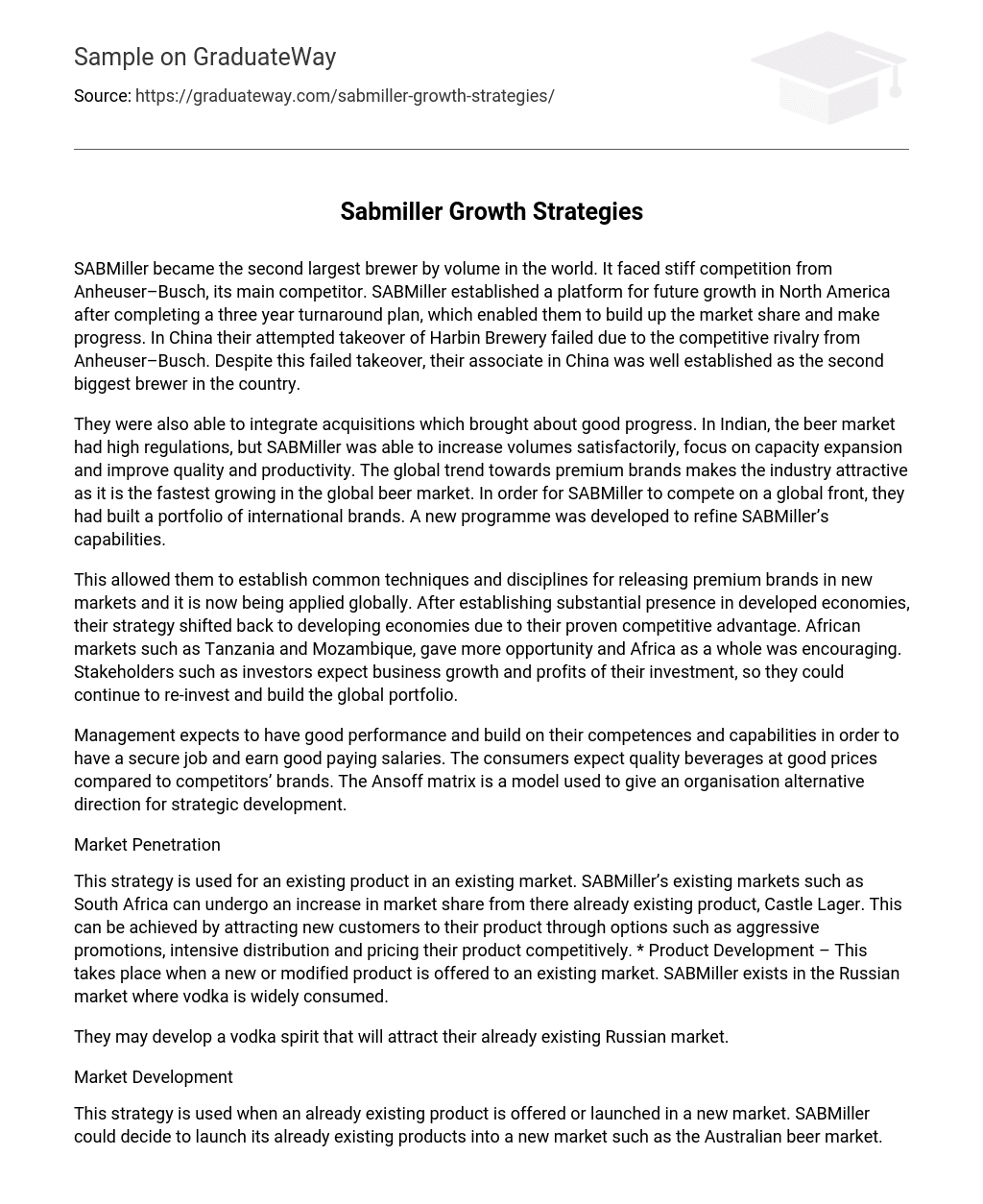SABMiller became the second largest brewer by volume in the world. It faced stiff competition from Anheuser–Busch, its main competitor. SABMiller established a platform for future growth in North America after completing a three year turnaround plan, which enabled them to build up the market share and make progress. In China their attempted takeover of Harbin Brewery failed due to the competitive rivalry from Anheuser–Busch. Despite this failed takeover, their associate in China was well established as the second biggest brewer in the country.
They were also able to integrate acquisitions which brought about good progress. In Indian, the beer market had high regulations, but SABMiller was able to increase volumes satisfactorily, focus on capacity expansion and improve quality and productivity. The global trend towards premium brands makes the industry attractive as it is the fastest growing in the global beer market. In order for SABMiller to compete on a global front, they had built a portfolio of international brands. A new programme was developed to refine SABMiller’s capabilities.
This allowed them to establish common techniques and disciplines for releasing premium brands in new markets and it is now being applied globally. After establishing substantial presence in developed economies, their strategy shifted back to developing economies due to their proven competitive advantage. African markets such as Tanzania and Mozambique, gave more opportunity and Africa as a whole was encouraging. Stakeholders such as investors expect business growth and profits of their investment, so they could continue to re-invest and build the global portfolio.
Management expects to have good performance and build on their competences and capabilities in order to have a secure job and earn good paying salaries. The consumers expect quality beverages at good prices compared to competitors’ brands. The Ansoff matrix is a model used to give an organisation alternative direction for strategic development.
Market Penetration
This strategy is used for an existing product in an existing market. SABMiller’s existing markets such as South Africa can undergo an increase in market share from there already existing product, Castle Lager. This can be achieved by attracting new customers to their product through options such as aggressive promotions, intensive distribution and pricing their product competitively. * Product Development – This takes place when a new or modified product is offered to an existing market. SABMiller exists in the Russian market where vodka is widely consumed.
They may develop a vodka spirit that will attract their already existing Russian market.
Market Development
This strategy is used when an already existing product is offered or launched in a new market. SABMiller could decide to launch its already existing products into a new market such as the Australian beer market.
Diversification
This is a strategy that offers a new product to a new market. SABMiller may develop a totally new product from what they normally offer. For instance, they could begin to produce snacks such as potato chips or crisps which they could sell to a market such as Mexico.





